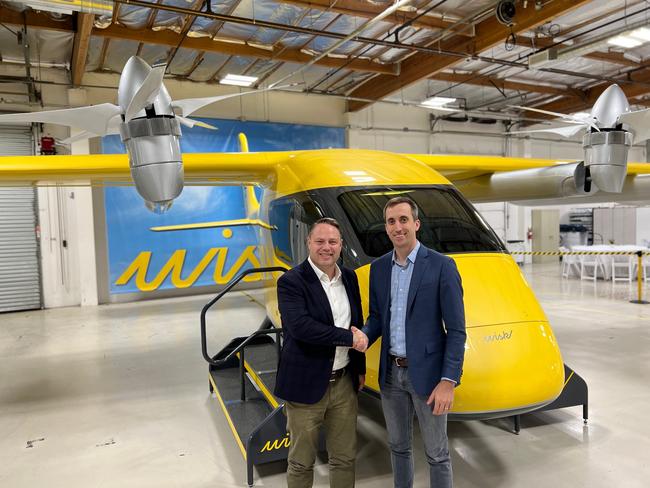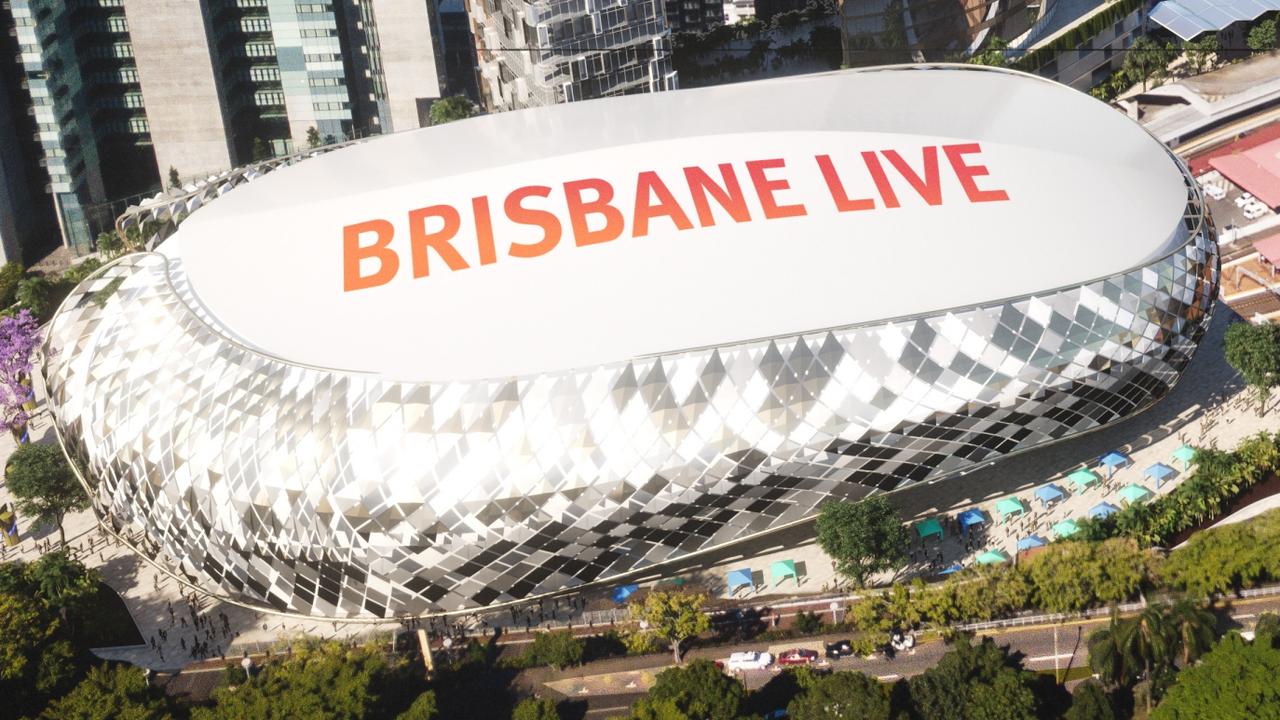Flying air taxis could become major job-creating industry for southeast Queensland
Self-flying taxis could be zipping around Queensland’s southeast before 2032, with a new report saying the region has all the right attributes.
Future QLD
Don't miss out on the headlines from Future QLD. Followed categories will be added to My News.
Self-flying taxis could whisk people from Brisbane to the Sunshine Coast in 22 minutes, and become a major job-creating industry worth millions to South East Queensland’s economy in the lead-up to the 2032 Olympic Games, according to a new report.
The report into the advantages of creating an autonomous air taxi industry in Brisbane has been published by Boeing-backed Wisk Aero and the South East Queensland Council of Mayors, and comes seven months after the pair inked a major business deal.
A delegation of the 11-member council, including Brisbane Lord Mayor Adrian Schrinner, is on an 11-day fact-finding mission in the US and Canada ahead of the 2032 Games.
Cr Schrinner said the work with Wisk Aero, an advanced air mobility company, demonstrated South East Queensland was serious about attracting new and innovative technology, investment and jobs for 2032 and beyond.
The report, released publicly on Sunday, outlines the benefits and advantages of air taxis and how the industry could be introduced to the region.
Among the advantages spruiked is the possibility of whisking travellers from Brisbane Airport to the Sunshine Coast in 22 minutes, or flying people from the CBD to the islands of Moreton Bay in under 15 minutes.
And the revenue forecast for the autonomous air mobility services in the region would be significant over the next 12 to 15 years according to the report, about $500m a year by 2030.

According to the report the industry would create more than 4600 new permanent jobs across the region by 2045, including for engineers, technicians, regulators, marketers and customer service officers.
But the report notes the success of the industry, in part, would depend on the willingness of the public to accept and use the technology.
Careful planning would be needed to determine landing locations, inform flight routes, community impact and demand alongside regulatory requirements.
The report noted noise pollution was a significant barrier in accepting regular helicopter operations in urban areas, and though air taxi technology would be a lot quitter flight routes would need to be designed with noise impact “front of mind”.
Work to support councils in the region identify potential landing pads or “vertiport” locations will happen over the next 12 to 24 months, according to the report.
The state government will be a “key player”, as legislation would be needed in the transport space.
Wisk Aero Asia Pacific regional director Catherine MacGowan said Queensland had an incredible opportunity to be at the forefront of the autonomous air mobility industry.
“The region is experiencing unprecedented growth, and establishing a thriving AAM sector will create important economic opportunities and transportation linkages that will help the region develop in a sustainable way,” she said.
Cities such as Dubai, Toronto, Beijing, and Linz in Austria have progressed an air taxi industry to varying degrees.





